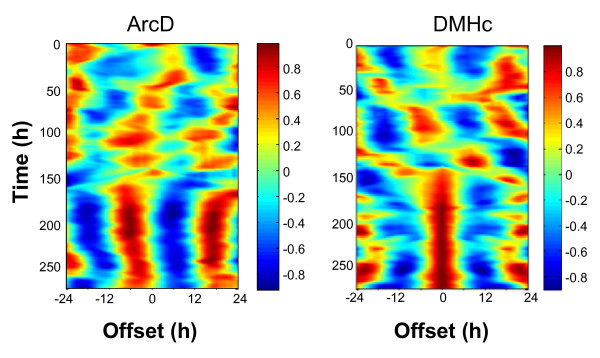Figure 8.
Forskolin synchronizes cellular oscillators in the MBH. Plots showing cross correlations between pairs of oscillating cells in the ArcD (left) and DMHc (right). Correlations were calculated from raw data using a moving window (duration 48 h) with the test cell shifted in time between -24 and +24 hours. The color scale indicates the strength of correlation at any given point with 1 (dark red) indicating perfect correlation and -1 (dark blue) perfect anti-correlation. Initially the cells shown were weakly synchronized (ArcD) or exhibited different circadian periods (DMHc). After addition of forskolin at time 150 h, the periods of cellular oscillators synchronized (indicated by stronger vertical banding) and adopted a stable phase relationship either in phase (DMHc) or with one cell phase leading the other by ~6 h (ArcD).

